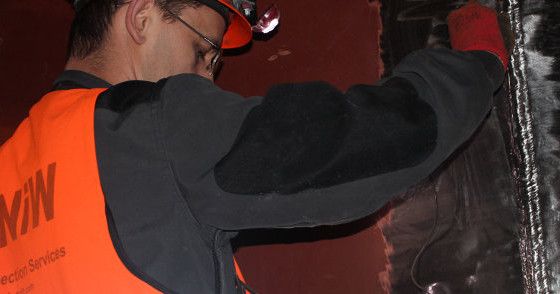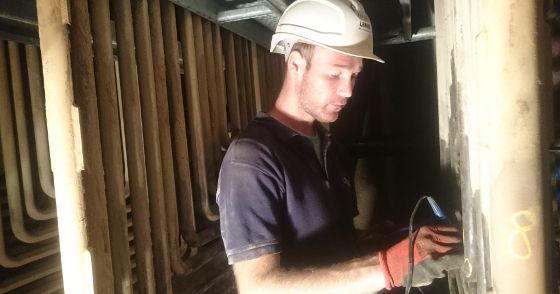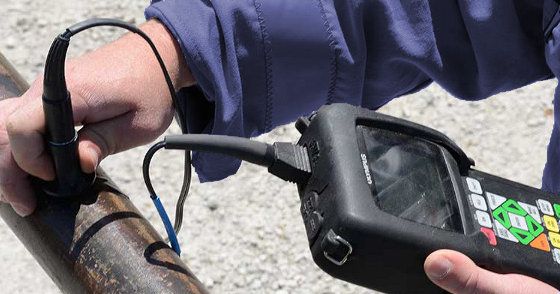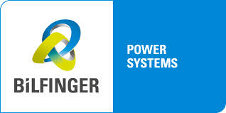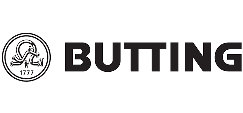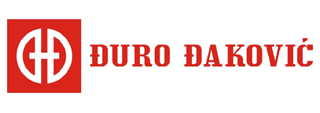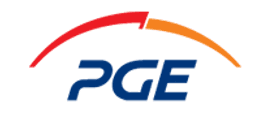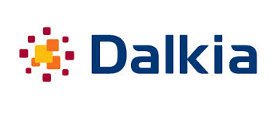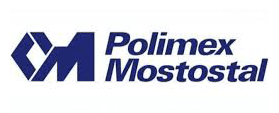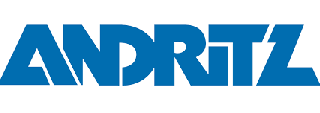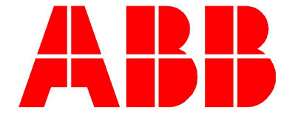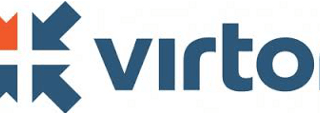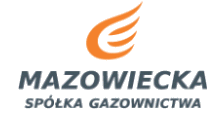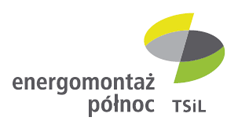Ultrasonic Testing (UT)
Ultrasonic Testing — image gallery
Why choose us?
- We deliver on our promises – when we say we’ll do something, we do it!
- Flexible service with quick turnaround times
- Independent and impartial testing
- Successful track record of delivering NDT services to various industries including large-scale industrial projects for global clients
- Highly trained and certified, multi-disciplined specialists
- Modern and always well-calibrated equipment
- Testing performed according to the written procedures approved by a level III NDT engineer
- Quality of service verified and confirmed by the approvals of the independent certification bodies
- Always ready to answer questions on testing and quality assurance
Service Information
Ultrasonic Testing (UT)
Ultrasonic Flaw Detection
Ultrasonic inspection uses high-frequency sound waves energy to detect internal imperfections, measure material thickness and determine acceptance or rejection of a test object based on a reference code or standard. Through the use of traditional transverse (shear) wave and longitudinal (compression) wave transducers and A-scan oscilloscope instrumentation components are inspected in compliance with the applicable norms and/or customer requirements.
LBNiW’s UT techniques provide instant results, and are sensitive to both surface and subsurface discontinuities throughout the entire material, and may be used with access to only one surface. Our highly qualified experts are able to provide accurate readings regarding discontinuity’s size, shape, and location.
We utilize ultrasonic testing primarily for manual weld inspection to verify code compliance during fabrication of piping systems, boilers, pressure vessels, storage tanks and structural steel welds. LBNiW’s UT techniques are also useful for locating laminations and inclusions in rolled materials and to detect discontinuities in castings, forgings and for Ultrasonic Thickness Testing (UTT).
Our equipment is portable and guarantees quick and highly accurate inspections. It also offers the ability to record the discontinuity reading for later review. We have a wide selection of probes available from 1 MHz to 5 MHz, and various configurations of angles and diameters.
Ultrasonic Testing of Butt Welds in Carbon Steel with Thickness Range 2mm-8mm Utilizing Custom Testing Procedure IBUS-TD-07
Existing codes and standards related to the conventional ultrasonic testing of welds generally restrict their scope of application to steel thickness greater than 8mm. The reason that the 8mm limit applies in most cases is that it is not possible with thinner sections to apply standard UT probes because they produce low signal-to-noise ratio and, therefore, the beam can’t be easily defined.
LBNiW offers ultrasonic testing of butt welds in carbon steel with thicknesses below 8mm by employing custom testing procedure IBUS-TD-07. This procedure has a long history of application in the Polish energy sector where it proved to be an efficient flaw detection technique. The IBUS-TD-07 procedure has been qualified and approved by UDT – The Polish Office of Technical Inspection (Polish notified body for the Pressure Equipment Directive) for inspection of equipment that falls under the technical supervision of UDT.
The IBUS-TD-07 procedure utilizes custom-made angle beam, shear wave transducers in tandem arrangement with radius wedges covering pipe diameters ranging from Ø 28 – Ø 89 when used to test pipe welds. These specialized transducers offer superior signal-to-noise ratio in thin materials and therefore improved defect detectability. The procedure specifies the equipment set up which involves the use of custom-made calibration blocks, and how the tests must be performed in order to obtain consistent and reliable results.
At LBNiW, we mostly utilize IBUS-TD-07 procedure in lieu of radiography for inspecting welds of boiler tubes, but the technique is also applicable to plates. Because ultrasonic testing of welds with thicknesses below 8mm falls outside the scope of widely accepted standards LBNiW performs inspections according to IBUS-TD-07 only when it is explicitly agreed upon with our clients.
Ultrasonic Thickness Testing
Ultrasonic thickness measurement is a widely used non-destructive testing technique which requires access to only one side of the test piece. It is fast, reliable and versatile technique. Ultrasonic thickness gauges work by precisely measuring how long it takes for a sound pulse that has been generated by an ultrasonic transducer to travel through a test piece and reflect from the back wall.
At LBNiW, we offer on-site thickness measurements for corrosion analysis on in-service equipment including boiler piping, process piping, pressure vessels and storage tanks. We utilize state of the art ultrasonic thickness gauges equipped with the latest through-coat technology which measures metal and nonmetallic coating thickness without the need to remove paint or coatings from tested surfaces. These advanced precision gauges have built-in data logging capabilities that allow thousands of measurements to be recorded and later transferred to the computer software for comprehensive analysis and generating immediate reports.
Our Qualifications
Our highly skilled trained personnel will ensure the inspection is accurate and performed according to specifications. All our UT specialists are certified to level 2 according to ISO 9712 (EN473). They have good understanding and experience in both the method of inspection and the nature of the industries they are working. They follow strict testing procedures, which are set out in our comprehensive quality management system. Our inspectors are also well versed in the industry standards that prescribe how inspections should be performed and/or special considerations to be employed. They utilize up-to-date, properly calibrated equipment which guarantees accurate and consistent results.
Advantages of Ultrasonic Testing Method
- Detects surface and subsurface defects
- Particularly useful for detecting planar imperfections located internally in the material
- Superior penetrating power for detection of defects deep in the material
- Only single sided access is required with a pulse-echo technique
- Results are instantly available
- High accuracy regarding estimating discontinuity location, size, and shape
- No environmental or safety hazard as is present with radiography
- Instruments are light, portable and battery powered
Disadvantages of Ultrasonic Testing Method
- Skills and training of the ultrasonic specialist are more extensive than other methods
- Surface roughness, complex geometries, small parts or exceptionally thin materials are difficult to inspect
- Linear discontinuities oriented parallel to the sound beam will usually not be detected
- Coarse-grained materials i.e. cast iron are difficult to inspect due to low sound transmission and high signal noise
- Normally requires a coupling medium to provide transfer of sound energy
- Reference standards are required for both equipment calibration and the characterization of flaws
- Surfaces must be prepared by cleaning and removing scale, loose paint etc. prior to inspection
Relevant Codes & Standards
Application Specific Standards
- EN 12952-6, Water-tube boilers and auxiliary installations Inspection during construction; documentation and marking of pressure parts of the boiler
- EN 12953-5, Shell boilers. Inspection during construction, documentation and marking of pressure parts of the boiler
- EN 13480-5, Metallic industrial piping Inspection and testing
- EN 13445-5, Unfired pressure vessels Inspection and testing
- EN 12732, Gas infrastructure. Welding steel pipework. Functional requirements
- EN 14015, Specification for the design and manufacture of site built, vertical, cylindrical, flat-bottomed, above ground, welded, steel tanks for the storage of liquids at ambient temperature and above
- EN 1090-2, Execution of steel structures and aluminium structures Technical requirements for steel structures
- EN 14197-2, Cryogenic vessels. Static non-vacuum insulated vessels Design, fabrication, inspection and testing
- EN 13458-2, Cryogenic vessels. Static vacuum insulated vessels Design, fabrication, inspection and testing
- EN-ISO 9606-1, Qualification testing of welders. Fusion welding Steels
- EN-ISO 9606-2, Qualification test of welders. Fusion welding Aluminium and aluminium alloys
- EN ISO 15614-1 Specification and qualification of welding procedures for metallic materials. Welding procedure test. Arc and gas welding of steels and arc welding of nickel and nickel alloys
- EN-ISO 17635, Non-destructive testing of welds. General rules for metallic materials
Standards Specific to Ultrasonic Examination
- EN-ISO 17640, Non-destructive testing of welds. Ultrasonic testing – Techniques, testing levels, and assessment
- EN-ISO 11666, Non-destructive testing of welds. Ultrasonic testing – Acceptance levels
- EN-ISO 23279, Non-destructive testing of welds. Ultrasonic testing – Characterization of indications in welds
- EN-ISO 22825, Non-destructive testing of welds. Ultrasonic testing. Testing of welds in austenitic steels and nickel-based alloys
- EN 14127, Non-destructive testing. Ultrasonic thickness measurement
- EN 10160, Ultrasonic testing of steel flat product of thickness equal or greater than 6 mm (reflection method)
- EN 10307, Non-destructive testing. Ultrasonic testing of austenitic and austenitic-ferritic stainless steels flat products of thickness equal to or greater than 6 mm (reflection method)
- EN 12680-1, Founding. Ultrasonic examination Steel castings for general purposes
- EN 12680-2, Founding. Ultrasonic examination Steel castings for highly stressed components
- EN 10228-3, Non-destructive testing of steel forgings Ultrasonic testing of ferritic or martensitic steel forgings
- EN 10228-4, Non-destructive testing of steel forgings Ultrasonic testing of austenitic and austenitic-ferritic stainless steel forgings
- EN 10306, Iron and steel. Ultrasonic testing of H beams with parallel flanges and IPE beams
- EN-ISO 16810, Non-destructive testing. Ultrasonic testing – General principles
- EN-ISO 16811, Non-destructive testing. Ultrasonic testing – Sensitivity and range setting
- EN-ISO 16823, Non-destructive testing. Ultrasonic testing – Transmission technique
- EN-ISO 16826, Non-destructive testing. Ultrasonic testing – Examination for discontinuities perpendicular to the surface
- EN-ISO 16827, Non-destructive testing. Ultrasonic testing – Characterization and sizing of discontinuities
- EN-ISO 2400, Non-destructive testing. Ultrasonic testing – Specification for calibration block No. 1
- EN-ISO 7963, Non-destructive testing. Ultrasonic testing – Specification for calibration block No. 2
- EN 12668-1, Non-destructive testing. Characterization and verification of ultrasonic examination equipment Instruments
- EN 12668-2, Non-destructive testing. Characterization and verification of ultrasonic examination equipment Probes
- EN 12668-3, Non-destructive testing. Characterization and verification of ultrasonic examination equipment Combined equipment
- EN 1330-4, Non-destructive testing. Terminology Terms used in ultrasonic testing
- EN 15317, Non-destructive testing. Ultrasonic testing. Characterization and verification of ultrasonic thickness measuring equipment
- ASME Boiler and Pressure Vessel Code Section V Article 4 – Ultrasonic Examination Methods for Welds.
- ASME Boiler and Pressure Vessel Code Section V Article 5 – Ultrasonic Examination Methods for Materials
Our UT Resources
We hold the following ultrasonic testing equipment:
- 4 GE Krautkramer USM 35X flaw detectors
- 1 Fully loaded Olympus 45MG advanced thickness gauge with GageView™ software
- 1 Olympus 36DL Plus ultrasonic thickness gauge

